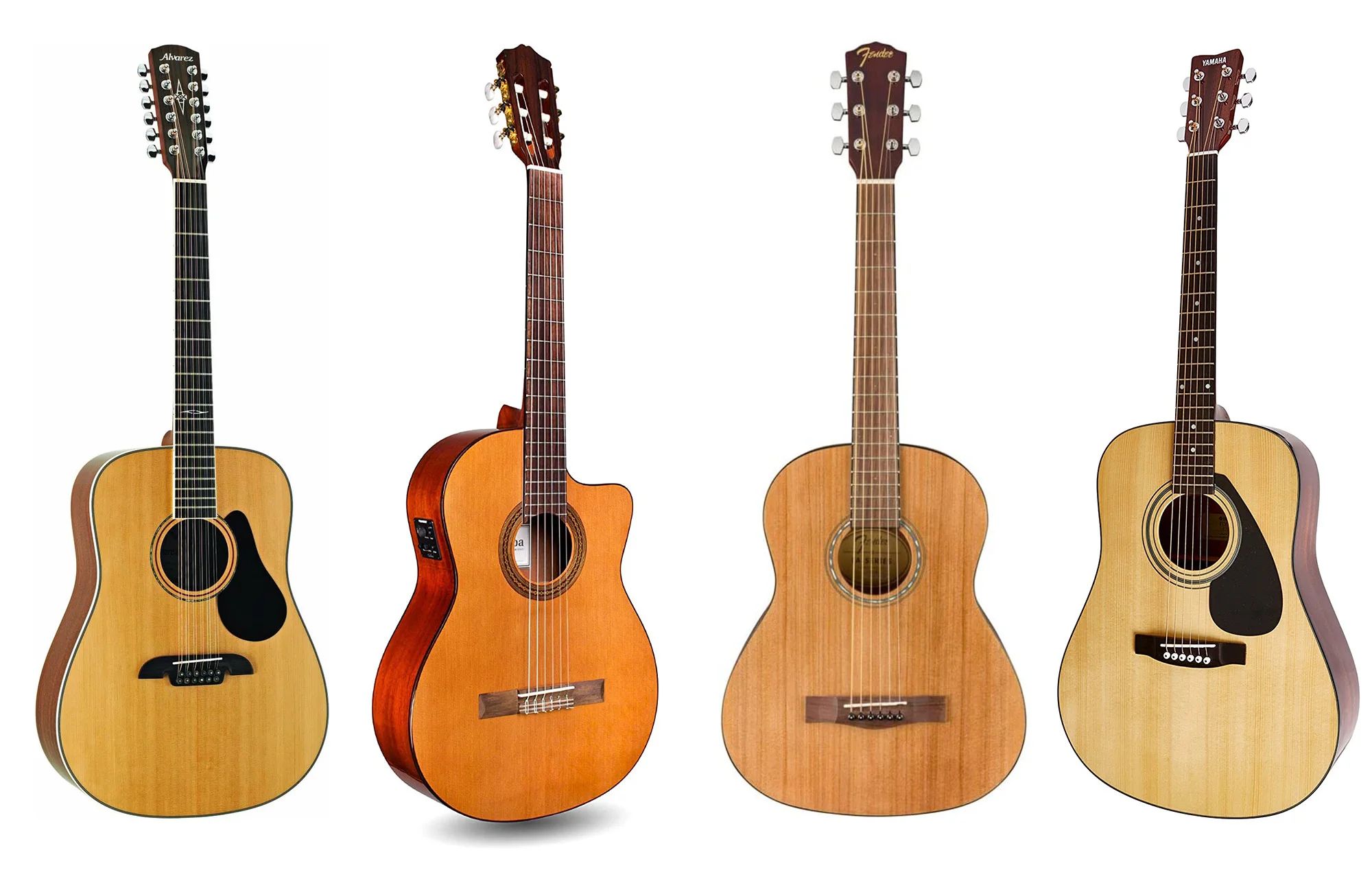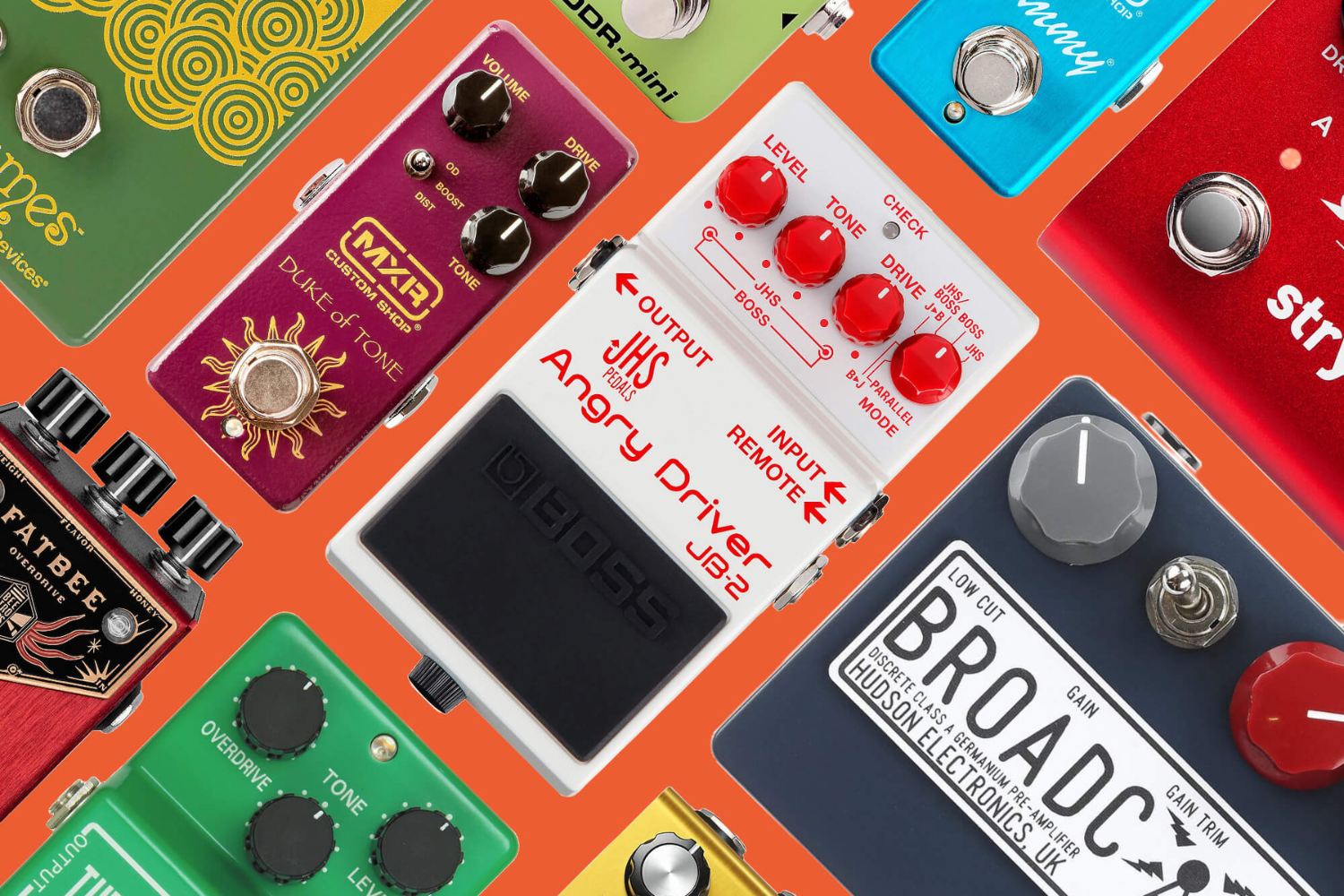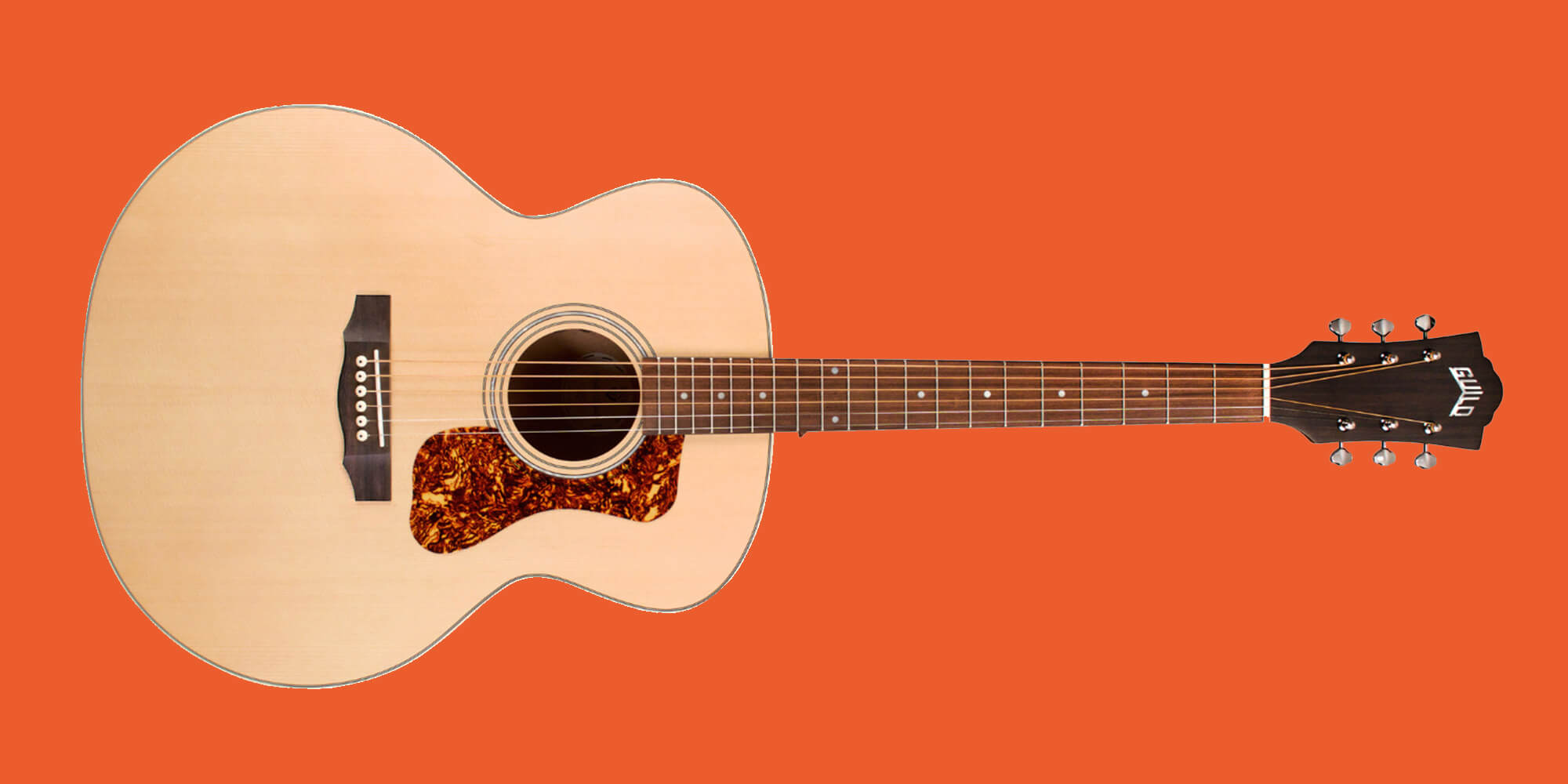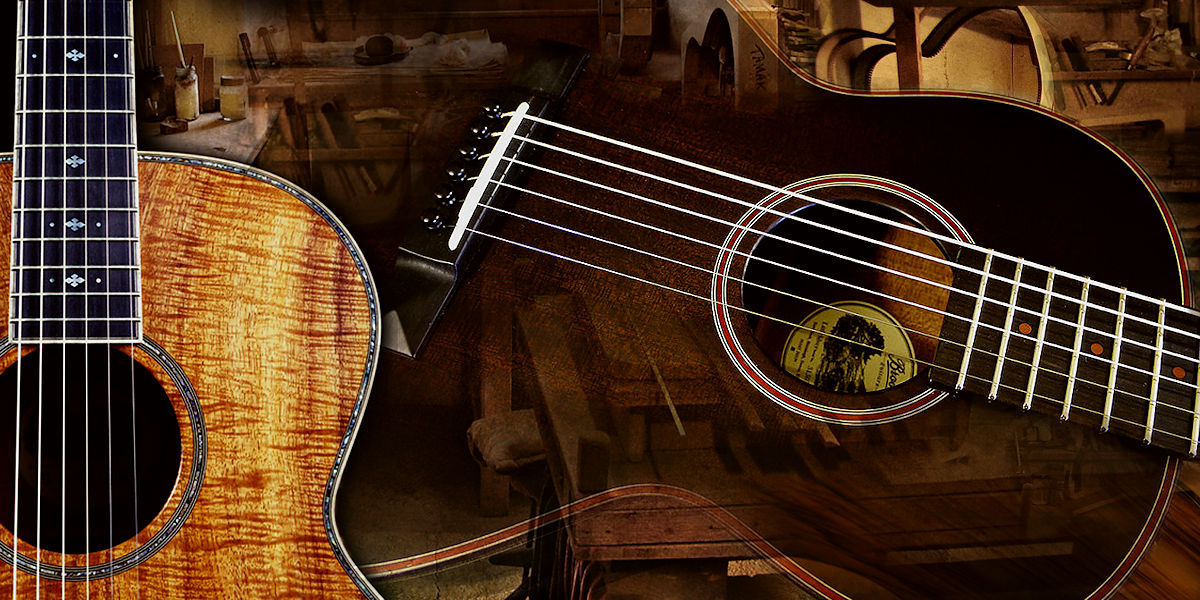Introduction
When you listen to the rich and captivating melodies produced by an acoustic guitar, have you ever wondered how this instrument creates such beautiful sounds? The magic lies in the intricacies of its construction, as well as the physics behind the production of sound. Understanding the anatomy and mechanics of an acoustic guitar can deepen your appreciation for this timeless instrument.
Every component of an acoustic guitar plays a crucial role in sound production. From the vibrating strings to the resonating soundboard, each element interacts to produce the unique tones and harmonies that we love to hear. In this article, we will explore the fascinating world of acoustic guitars and uncover the secrets behind their enchanting sounds.
We will start by dissecting the anatomy of an acoustic guitar, examining each part and its contribution to the overall sound. From there, we will delve into the concept of vibrations and resonance, which are fundamental to sound production. We will then explore the functions of key components such as the soundboard, sound hole, strings, neck, and fretboard, and how they affect the sound quality.
Furthermore, we will discuss the impact of body shape and size on the sound produced by an acoustic guitar. The bridge and saddle, essential for transmitting vibrations to the soundboard, will also be examined. Additionally, we will explore the role of bracing in sound generation and how different types of wood used in construction can influence the acoustic properties of the instrument.
Lastly, we will examine the importance of the nut and tuning pegs in maintaining proper string tension and sound accuracy. By the end of this article, you will have a comprehensive understanding of the various elements that come together to create the mesmerizing sounds of an acoustic guitar.
So, let’s embark on this journey into the realm of acoustic guitars, unraveling their secrets and gaining a deeper appreciation for the beauty of their sound.
Anatomy of an Acoustic Guitar
To understand how an acoustic guitar produces sound, we must first explore its anatomy. Each part of the guitar contributes to its overall functionality and tonal qualities.
1. Body: The body of an acoustic guitar is typically made up of three parts: the top (soundboard), the back, and the sides. These components are responsible for amplifying and projecting the sound produced by the strings.
2. Neck: The neck is a long, slender component that extends from the body of the guitar. It provides support for the fretboard and houses the truss rod, which helps adjust the neck’s curvature and maintain proper string action.
3. Headstock and Tuning Pegs: The headstock is located at the end of the neck and houses the tuning pegs. These pegs allow for precise tuning of the guitar’s strings, ensuring accurate pitch and sound quality.
4. Fretboard: The fretboard is a flat, often wooden, surface fixed to the neck. It contains metal frets that divide the neck into specific intervals, allowing players to produce different notes and chords by pressing down the strings against the frets.
5. Sound Hole: Located on the soundboard, the sound hole allows air to escape from inside the guitar’s body, enabling the soundboard to vibrate freely and produce sound.
6. Bridge and Saddle: The bridge is situated on the soundboard, precisely aligned with the sound hole. It holds the strings in place, transferring the vibrations from the strings to the soundboard. The saddle, a small piece beneath the bridge, ensures proper string height and spacing.
7. Soundboard: The top of the guitar, also known as the soundboard, plays a crucial role in sound production. It resonates with the vibrations of the strings, amplifying and projecting the sound outward.
8. Strings: The strings are vital for producing sound. When plucked or strummed, they vibrate and create sound waves that resonate throughout the guitar’s body, resulting in audible tones.
9. Bracing: Inside the body of an acoustic guitar, bracing is used to strengthen the structure and control vibrations. It consists of wooden strips strategically placed on the inside of the soundboard and the back to enhance stability and tonal balance.
These are the key components that make up the anatomy of an acoustic guitar. Each part has a specific function, working together harmoniously to produce the captivating sounds we associate with this beloved instrument.
Vibrations and Resonance
In order to comprehend how an acoustic guitar produces sound, we must explore the concepts of vibrations and resonance. These fundamental principles play a significant role in the creation of the guitar’s enchanting tones.
Vibrations: When a guitar string is plucked or strummed, it vibrates rapidly, creating a series of waves in the air. These vibrations travel through the soundboard, bridge, and the rest of the guitar, causing the body to resonate and amplify the sound.
Resonance: Resonance occurs when an object vibrates at its natural frequency or frequencies in response to external stimuli. In the case of an acoustic guitar, the vibrating strings produce sound waves that match the resonant frequencies of the guitar’s body. This phenomenon causes the guitar to resonate and enhances the volume and richness of the sound produced.
The vibrations and resonance of an acoustic guitar are influenced by various factors, including the materials used, body shape, and construction techniques employed. These factors determine the unique tonal characteristics and qualities of each instrument.
It is worth noting that different parts of the guitar contribute differently to the overall vibration and resonance. The soundboard, for example, is crucial for amplifying the vibrations of the strings. Its large surface area and thin construction allow it to vibrate freely, resulting in stronger sound projection.
The sound hole also plays a significant role in the resonance of an acoustic guitar. It acts as an opening for air to escape, allowing the soundboard to vibrate more effectively and produce a richer, more resonant sound. The size and placement of the sound hole can affect the tonal balance and projection of the instrument.
In summary, vibrations and resonance govern the way an acoustic guitar produces sound. The vibrations generated by the strings are amplified and projected through the guitar’s body, resulting in the beautiful tones we hear. Understanding these principles opens up a world of appreciation for the intricate design and craftsmanship behind this remarkable instrument.
The Soundboard and its Role in Sound Production
The soundboard is a vital component of an acoustic guitar that plays a crucial role in sound production. Also known as the top, it is typically made from a thin, resonant wood, such as spruce or cedar. The soundboard acts as a vibrating diaphragm, amplifying and projecting the sound created by the strings.
When the guitar strings are plucked or strummed, they transfer energy to the soundboard through the bridge. As the strings vibrate, they set the soundboard in motion, creating a complex pattern of vibrations. These vibrations are transmitted through the soundboard, resulting in the production of audible sound waves.
The soundboard is carefully engineered to optimize sound projection and tonal qualities. It is typically arched or curved to enhance its ability to vibrate freely. The arching allows the soundboard to distribute the vibrations more evenly, producing a balanced and resonant sound.
The soundboard also features fine-tuned bracing patterns, which help control the vibrations and reinforce structural stability. Braces are thin wooden strips that are strategically placed on the inside of the soundboard. They provide support and prevent excessive distortion while allowing the board to vibrate in a controlled manner.
It is important to note that the choice of wood for the soundboard greatly affects the overall sound of the guitar. Spruce, known for its strength and resonance, is a popular choice for its excellent projection and clarity. Cedar, on the other hand, offers a warmer and more mellow tone. The selection of wood is often based on personal preference and desired tonal characteristics.
In addition to its primary function in sound production, the soundboard also contributes to the aesthetic appeal of the guitar. Delicate craftsmanship, such as bindings and rosettes, are often intricately designed on the soundboard to enhance the visual appeal of the instrument.
In summary, the soundboard is a vital component of an acoustic guitar, responsible for amplifying and projecting the sound produced by the strings. Through its delicate construction, arched shape, and bracing patterns, the soundboard ensures optimal sound projection and tonal qualities. Its material selection also influences the overall sound characteristics of the guitar. The soundboard truly serves as the heart of the instrument, resonating with beauty and producing the captivating melodies we associate with the acoustic guitar.
The Sound Hole and its Function
Located on the soundboard of an acoustic guitar, the sound hole is a prominent feature with a crucial function in sound production. This circular or oval-shaped opening serves multiple purposes, all of which contribute to the distinctive sound of the instrument.
One primary function of the sound hole is to allow air to escape from inside the guitar’s body. When the guitar strings are plucked or strummed, they set the soundboard in motion, creating vibrations that resonate throughout the body. The sound hole acts as an opening, enabling the displacement of air and preventing sound dampening. Without a sound hole, the air trapped inside the guitar would impede the soundboard’s ability to vibrate freely, resulting in a muffled, lackluster sound.
The shape, size, and placement of the sound hole have a significant impact on the guitar’s overall sound characteristics. A larger sound hole can enhance the volume and projection of the instrument, allowing for a more robust and resonant sound. Conversely, a smaller sound hole may produce a more focused and precise tone. The placement of the sound hole is also carefully considered, taking into account the soundboard’s bracing patterns and the desired tonal balance of the guitar.
Furthermore, the sound hole contributes to the aesthetic appeal of the instrument. Many acoustic guitars feature intricate rosettes surrounding the sound hole, showcasing the craftsmanship and artistic expression of the luthier. These decorative elements not only enhance the visual appeal of the guitar but also add a touch of uniqueness to its overall design.
It is important to note that altering the size or shape of the sound hole can significantly influence the guitar’s tonal qualities. Luthiers and guitar makers experiment with different sound hole designs to achieve specific sound characteristics desired by musicians and players. Through years of experience and meticulous craftsmanship, they have discovered the ideal balance of aesthetics and functionality to create guitars with exceptional sound quality.
In summary, the sound hole is a critical feature of an acoustic guitar, serving multiple functions in sound production. It allows air to escape from the guitar body, enabling the soundboard to vibrate freely and produce a fuller, more resonant sound. Additionally, the size, shape, and placement of the sound hole contribute to the instrument’s overall tonal qualities. The aesthetic appeal of the sound hole, with its intricate rosettes, adds to the visual allure of the guitar. By carefully considering and crafting the sound hole, luthiers create instruments that captivate both audibly and visually.
The Role of Strings in Sound Creation
When it comes to sound creation in an acoustic guitar, the strings play a paramount role. These thin, taut wires, typically made of steel or nylon, are responsible for producing the initial vibrations that eventually result in the beautiful music we hear.
When the strings of an acoustic guitar are plucked, strummed, or picked, they begin to vibrate. This vibration generates sound waves that travel through the air, creating audible tones. The pitch or frequency of the sound produced is determined by the length, thickness, tension, and material of the strings.
The length of the vibrating portion of a string is determined by where it is pressed against the fretboard. By shortening or lengthening the vibrating length, players can produce different notes and pitches. This is achieved by pressing the strings against specific frets, altering their effective length and producing various harmonies.
Furthermore, the thickness and tension of the strings have a significant impact on the sound they produce. Thicker strings generally produce deeper, fuller tones, while thinner strings tend to have a brighter, more treble-heavy sound. Additionally, higher string tension can result in increased volume and sustain, giving the guitar a more vibrant and powerful sound.
Another factor that affects the sound of the strings is the material from which they are made. Steel strings, commonly used on acoustic guitars, offer a bright, clear, and rich sound. They are favored by many players for their versatility and ability to project well. On the other hand, nylon strings are often used on classical or flamenco guitars, offering a softer and warmer tone.
It is also worth mentioning that the condition of the strings greatly affects the sound quality. Strings that are old, worn, or oxidized can result in a dull, lifeless sound. It is recommended to regularly change the strings to maintain optimal sound production and tone.
Additionally, the technique and style of playing can have a considerable influence on the character of the sound. Different playing techniques, such as fingerpicking, strumming, or using a guitar pick, can produce varied tonal qualities and textures. The intensity and angle of attack on the strings can also affect the sound, allowing players to convey different emotions and musical expressions.
In summary, the strings of an acoustic guitar are the initiators of sound creation. Through their vibrations, they generate the initial tones that travel through the air and ultimately reach our ears. The length, thickness, tension, and material of the strings, in combination with playing technique, contribute to the unique sound and tonal qualities of the guitar. It is through these vibrating strings that the magic and beauty of acoustic guitar music are brought to life.
How the Neck and Fretboard Affect Sound
The neck and fretboard of an acoustic guitar not only facilitate playability but also significantly impact the instrument’s sound. These components, working in harmony, contribute to the overall tonal qualities and characteristics of the guitar.
The neck provides structural support for the strings and serves as a connection between the body and the headstock. Typically made of hardwood, such as mahogany or maple, the neck plays a crucial role in transmitting the vibrations from the strings to the body of the guitar. Its rigidity and stability affect the transfer of energy and the sustain of the notes produced.
The fretboard, sometimes referred to as the fingerboard, is attached to the neck and houses the metal frets. Made of a dense and smooth material like rosewood or ebony, the fretboard spans the length of the neck and provides a playing surface for the fingertips. The frets divide the fretboard into specific intervals, allowing players to produce different notes and chords by pressing the strings down against them.
One important aspect to consider is the fretboard radius, which determines the curvature of the fretboard. A flatter radius, such as 12 inches, allows for lower action (the height of the strings above the frets) and facilitates fast and accurate playing. On the other hand, a more curved fretboard, like a 7.25-inch radius, provides a comfortable grip for chord playing and bending strings.
The choice of material for the fretboard also affects the guitar’s sound. Different woods offer varying tonal characteristics, influencing the overall timbre of the instrument. For instance, rosewood is often associated with a warm, rich tone, while maple delivers a brighter, more articulate sound. The choice of fretboard material is a personal preference that can be tailored to match the desired tonal qualities of the guitar.
Fretting technique and hand positioning on the fretboard also have an impact on the sound. A light touch and precise placement of the fingers can produce clearer, more resonant notes. Conversely, pressing the strings too hard or not placing the fingers close enough to the fret can cause the strings to buzz or muffle the sound.
In summary, the neck and fretboard of an acoustic guitar are integral to the instrument’s sound and playability. The neck’s stability and rigidity aid in the transfer of string vibrations, influencing sustain and overall tone. The fretboard provides a surface for playing and contributes to the guitar’s timbre, with different materials offering varying tonal characteristics. How a guitarist frets the strings and positions their hands on the fretboard can also impact the clarity and resonance of the sound produced. These elements work together to shape the unique sonic character of each acoustic guitar.
Impact of Body Shape on Sound
The body shape of an acoustic guitar has a significant impact on its sound. Different body shapes offer distinct tonal qualities, resonance, and projection, resulting in a wide range of sonic possibilities. The shape of the guitar body affects both the volume and tone produced, making it an essential consideration for players and enthusiasts.
One of the most common body shapes is the dreadnought. With its large and deep body, the dreadnought produces a powerful, balanced sound with ample bass response. It is well-suited for strumming and provides excellent projection, making it a popular choice for a variety of musical genres.
Conversely, guitars with smaller body shapes, such as the concert or parlor models, tend to have a more focused sound with less bass response. These guitars are well-suited for fingerpicking and offer a balanced tone across the frequency range. The reduced body size also makes them more comfortable to play for those with smaller physiques or who prefer a more intimate playing experience.
Another well-known body shape is the jumbo, which features a large, rounded body. Jumbo guitars typically produce a loud, boomy sound with pronounced bass and increased low-end response. These guitars excel in handling heavy strumming and provide a full, rich tone, often favored by players who seek a commanding presence.
In addition to the overall body shape, the depth and width of the guitar body also contribute to the instrument’s sound. Generally, deeper bodies, such as those found in acoustic bass guitars, offer enhanced bass response and resonance. Thinner bodies, on the other hand, tend to emphasize mid-range and treble frequencies, resulting in a brighter, more focused sound.
The choice of tonewoods used in the construction of the guitar body also plays a crucial role in shaping its sound. Different woods have unique tonal characteristics, influencing the overall timbre of the instrument. For example, mahogany is often associated with warm, focused tones, while rosewood is prized for its rich, resonant sounds and enhanced bass response. Spruce, with its versatile and dynamic qualities, is frequently utilized for the soundboards of many guitar body shapes.
It’s important to note that personal preference and playing style greatly influence the choice of body shape. What may sound appealing to one person may not resonate with another. Therefore, experimenting with different body shapes and tonewoods is key to finding the perfect guitar that suits your playing style and sonic preferences.
In summary, the body shape of an acoustic guitar significantly impacts its sound. Different body shapes offer unique tonal qualities, projection, and resonance. Factors such as depth, width, and tonewood selection further shape the instrument’s sonic characteristics. By understanding the effects of body shape on sound, players have the opportunity to choose a guitar that best matches their musical expression, whether they prefer powerful projection, balanced tones, or a more intimate playing experience.
The Bridge and Saddle: Transmitting Vibrations to the Soundboard
The bridge and saddle of an acoustic guitar play a crucial role in transmitting vibrations from the strings to the soundboard, ultimately shaping the sound of the instrument. These components, located on the lower bout of the guitar body, are essential for ensuring efficient energy transfer and producing clear, resonant tones.
The bridge serves as an anchor for the strings, holding them securely in place. It is typically made of wood, such as rosewood or ebony, which offers stability and durability. The strings are attached to the bridge with either bridge pins or through the use of a bridge plate system. When the strings are plucked or strummed, they create vibrations that travel through the bridge and into the soundboard.
The saddle, a small piece on the bridge, is responsible for transmitting the vibrations from the strings to the soundboard. It is usually made of bone, synthetic materials, or other hard materials, ensuring efficient energy transfer. The saddle is crucial for maintaining proper string height and spacing, contributing to playability and intonation.
As the strings vibrate, the vibrations are transferred to the saddle and, in turn, to the soundboard. The soundboard, also known as the top, is the primary component responsible for amplifying and projecting the sound of the guitar. The vibrations from the strings cause the soundboard to resonate, resulting in the production of audible sound waves.
The bridge and saddle must be carefully designed and positioned to optimize the transfer of vibrations. The placement of the saddle on the bridge affects the string action (the height of the strings above the fretboard). A properly positioned saddle ensures comfortable playing and allows for the optimal vibration of the strings.
The design and material composition of the bridge also influence the guitar’s sound. The shape, size, and weight of the bridge can impact the way vibrations are transmitted to the soundboard. Additionally, different wood species can impart their distinctive tonal characteristics to the bridge, subtly affecting the overall sound of the instrument.
Regular maintenance and setup adjustments are essential for the bridge and saddle to perform optimally. Adjusting the string height at the saddle, known as the action, can affect playability and the projection of the sound. Additionally, ensuring that the bridge is securely attached to the soundboard and that the saddle is properly aligned are crucial for optimal sound transmission and overall instrument performance.
In summary, the bridge and saddle of an acoustic guitar are integral in transmitting vibrations from the strings to the soundboard. They play a key role in shaping the instrument’s sound and tonal qualities. Through their design, positioning, and material selection, the bridge and saddle optimize the transfer of energy, allowing for efficient sound production and projection. Proper maintenance and setup adjustments are important to maintain their functionality and ensure the best possible sound quality.
Understanding the Role of Bracing in Sound Generation
Bracing is an integral part of an acoustic guitar’s construction, serving both structural and tonal purposes. Braces are thin strips of wood that are strategically placed on the inside of the guitar’s body, underneath the soundboard and sometimes the back as well. These braces provide support, reinforce the structural integrity of the guitar, and have a significant impact on the instrument’s sound generation.
One of the primary functions of bracing is to strengthen the guitar’s top and prevent it from collapsing under the tension of the strings. The carefully designed brace pattern adds stability to the soundboard, ensuring that it can handle the constant pressure exerted by the strings. By distributing the stress evenly across the soundboard, bracing allows it to vibrate freely and produce optimal sound.
Bracing also influences the tone and resonance of the guitar. The placement, thickness, and shaping of the braces affect the way the soundboard vibrates and responds to the strings’ vibrations. By strategically altering these factors, luthiers can achieve specific tonal qualities and enhance different aspects of the guitar’s sound.
There are various brace patterns used in guitar construction, each with its own impact on sound generation. The most common types include fan bracing, X bracing, ladder bracing, and scalloped bracing. Fan bracing, often found in classical guitars, provides a balanced tone with emphasis on warmth and complexity. X bracing, commonly used in steel-string guitars, offers a broader dynamic range and enhanced projection. Ladder bracing, seen in vintage parlor guitars, provides a unique, vintage tone. Scalloped bracing, with its carefully carved edges, allows for increased flexibility and responsiveness in sound production.
Bracing also helps to control the vibration and resonance of the soundboard. By strategically positioning and shaping the braces, luthiers can influence specific areas of the soundboard to vibrate more or less, resulting in tonal nuances and shaping the overall sound signature of the guitar.
Material selection for the braces can also affect the instrument’s sound. Softwoods like spruce are commonly used for their stiffness, strength, and ability to transmit vibrations effectively. Harder woods like mahogany or rosewood may be used in certain areas to accentuate specific tonal qualities or add structural integrity.
Overall, the role of bracing in an acoustic guitar is multifaceted. It not only provides structural support but also shapes the instrument’s sound and tonal characteristics. The placement, thickness, shaping, and material selection of the braces all contribute to the instrument’s overall responsiveness, tonal balance, and projection. Through meticulous craftsmanship and thoughtful design, luthiers utilize bracing to create guitars with unique and captivating sound signatures.
How Different Woods Affect Sound Quality
The choice of wood used in the construction of an acoustic guitar has a significant impact on its sound quality. Different woods offer unique tonal characteristics, influencing the instrument’s overall tone, resonance, and projection. The selection of wood for the soundboard, back, sides, neck, and fretboard all contribute to the guitar’s distinctive sound.
The soundboard, also known as the top, is one of the most critical components for sound production. It plays a crucial role in amplifying and projecting the vibrations of the strings. Many guitars use spruce for the soundboard due to its excellent stiffness-to-weight ratio and responsiveness. Spruce soundboards often produce a clear, balanced tone with strong projection. Cedar, on the other hand, is known for its warmer, more nuanced tone, often appealing to fingerstyle players.
For the back and sides of the guitar, a variety of woods are utilized. Rosewood is renowned for its rich, deep bass response and clear trebles, making it a popular choice for instruments that require a focused, well-rounded sound. Mahogany, on the other hand, produces a warm and articulate tone, with a more pronounced midrange. Maple offers a bright and clear sound with enhanced sustain, allowing notes to ring out distinctively.
When it comes to the neck and fretboard, various woods can be used. Mahogany or maple necks are commonly chosen for their stability and strength. These woods contribute to a balanced tone and reliable performance. For the fretboard, rosewood and ebony are frequently utilized for their durability, smooth playing surface, and tonal qualities. Rosewood imparts depth and warmth to the sound, whereas ebony offers a crisp and articulate response.
Each wood species possesses its own unique density, grain structure, and resonance, which ultimately influence the guitar’s sound. These differences can be subtle but can significantly impact the tonal characteristics of the instrument. It’s important to note that the combination of different woods used in a guitar’s construction contributes to the overall tonal complexity and sonic fingerprint.
However, it’s important to recognize that the influence of wood on sound is not solely predetermined by the species. Factors such as the age, quality, and construction of the guitar also play a role in shaping the instrument’s sound. Additionally, the craftsmanship and attention to detail in assembling the guitar contribute significantly to how the chosen woods interact and resonate with one another.
Ultimately, selecting the right wood for an acoustic guitar is a combination of personal preference and understanding the tonal properties associated with different woods. By considering the sound characteristics of various wood species and how they complement each other, guitar makers and players can create or choose an instrument that best matches their desired tonal palette and playing style.
The Importance of Nut and Tuning Pegs in Sound Production
The nut and tuning pegs are often overlooked components of an acoustic guitar, but they play a crucial role in sound production and overall instrument performance. These small but essential parts contribute to the guitar’s tuning stability, string vibration, and sustain, ultimately shaping the quality of the sound produced.
The nut is a small piece, usually made of bone or synthetic materials, located at the top of the guitar’s neck. It serves as a guide for the strings, ensuring proper spacing and alignment. The slots in the nut hold the strings securely in place, allowing them to vibrate freely and produce clear, accurate tones.
One of the primary functions of the nut is to establish the string height, known as the action, at the first fret. A well-cut and properly adjusted nut ensures that the strings are at the optimal height, allowing for comfortable playing and minimizing fret buzz. Additionally, the nut establishes the string spacing, ensuring that the distance between each string is consistent, promoting accurate playing and preventing unintentional string muting.
The material used for the nut is crucial for sound transmission and sustain. Traditionally, bone is preferred for its ability to efficiently transfer string vibrations to the guitar’s body, resulting in clearer and more resonant tones. Synthetic materials like Tusq or Corian can also offer similar qualities and contribute to increased sustain and tonal consistency.
Similarly, tuning pegs, also known as machine heads or tuners, play a vital role in sound production. These gears are located on the headstock of the guitar and are used to adjust the tension of the strings, allowing for accurate tuning and pitch control. Tuning stability is crucial for producing consistent sound quality and ensuring that the guitar remains in tune during prolonged playing sessions.
High-quality tuning pegs, often made of materials like brass or nickel, provide smooth and precise tuning adjustments. They allow for fine-tuning of the strings, ensuring that they are in tune with one another and with other instruments during ensemble playing. Smooth functioning tuning pegs also contribute to the overall playing experience, making it easier for guitarists to achieve the desired tunings quickly and accurately.
It’s important to regularly maintain and lubricate the nut and tuning pegs to ensure optimal performance. Proper lubrication reduces unwanted friction, allowing the strings to move smoothly through the nut slots and the tuning pegs to turn effortlessly. This not only improves tuning stability but also enhances the guitar’s responsiveness and sound quality.
In summary, the nut and tuning pegs of an acoustic guitar are essential components that significantly impact sound production and instrument performance. The nut establishes proper string spacing and height, maximizing string vibration and minimizing any unwanted vibrations or buzzing. The material of the nut contributes to sound transmission and sustain. Tuning pegs ensure accurate and stable tuning, playing a crucial role in consistent sound quality and overall musical experience. Regular maintenance and proper lubrication of these components are essential for optimal functionality and to preserve the integrity of the sound produced.
Conclusion
Understanding the intricate mechanics of an acoustic guitar enhances our appreciation for the beautiful sounds it produces. Each component, from the body to the strings, the neck to the soundboard, plays a vital role in the creation of captivating melodies and harmonies.
The anatomy of an acoustic guitar encompasses a variety of elements that work together to produce sound. The body shape, including the top, back, and sides, influences the volume, resonance, and tonal qualities of the instrument. The neck and fretboard affect playability, intonation, and the overall sound produced. The bridge and saddle transmit vibrations from the strings to the soundboard, giving life to the music. The nut and tuning pegs ensure accurate tuning and string stability, contributing to sound quality. Additionally, the choice of woods for different parts of the guitar impacts tone, sustain, and sonic complexity.
Vibrations and resonance are fundamental principles that govern sound production in an acoustic guitar. The strings, when plucked or strummed, create vibrations that resonate through the soundboard, amplifying and projecting sound waves. The air escaping through the sound hole enables the soundboard to vibrate freely, creating rich, vibrant tones.
As an SEO writer, it’s important to understand and communicate these intricate details while maintaining an engaging and accessible writing style. By providing informative content that appeals to both search engines and readers, we can improve the visibility of articles while delivering an enjoyable reading experience.
Through careful crafting and selection of keywords, utilization of HTML formatting, and incorporation of creative writing techniques, we can create engaging and SEO-friendly articles about various aspects of the acoustic guitar. By striking a balance between informative content and a natural, conversational tone, we can captivate readers while optimizing the visibility of the article in search engine results.
So, whether you’re a musician, guitar enthusiast, or simply curious about how an acoustic guitar produces its mesmerizing sounds, delving into its anatomy and mechanics adds a whole new dimension to your appreciation of this versatile instrument.
Now, armed with knowledge about the anatomy, vibrations, woods, and various components of an acoustic guitar, you can explore the world of these beautiful instruments with a deeper understanding. Whether you’re strumming a chord progression, plucking individual notes, or composing a heartfelt melody, you can revel in the intricate craftsmanship and physics that come together to create the enchanting sounds of an acoustic guitar.

























